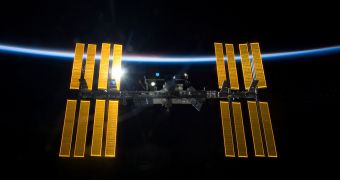Living aboard the International Space Station sounds like fun, for a couple of hours. While floating in microgravity and looking down at the Earth sounds hugely exciting, the astronauts aboard the ISS are actually at work up there and spend months confined to a small, musty space with people they barely know.
Not only that, but living in microgravity and in such cramped quarters can take a toll on anyone's body, even the super fit astronauts’.
Making their lives easier is a priority for everyone involved. One common problem is insomnia; half of the people that fly in space end up using sleeping pills. They're the most used type of drug aboard the ISS, apart from painkillers.
The stress of having to do a tough job, away from your family, for months at a time while the world is watching along with the unusual environment means that most astronauts eventually have problems sleeping.
The ISS circles the globe every 90 minutes, so the astronauts see a new sunrise every hour and a half. They also float in their beds, the time zone changes between Houston and Moscow time regularly and it all adds up.
NASA wants to eliminate part of the problem by replacing the lights aboard the US section of the ISS. The current fluorescent bulbs are due to be replaced by LEDs which can change hue, going from blueish white light to a purer white and to a reddish hue.
The idea is to simulate the Earth daily cycle to which our bodies are accustomed to. The blue light signals our bodies that it's day time, making us more alert. Conversely, reddish light is associated with the evening and sleep.
NASA will spend some $11.2 million, €8.51 million on replacing all the bulbs by 2016. The new LED-based ones have undergone extensive testing and can be controlled from Earth but also by the astronauts.

 14 DAY TRIAL //
14 DAY TRIAL //